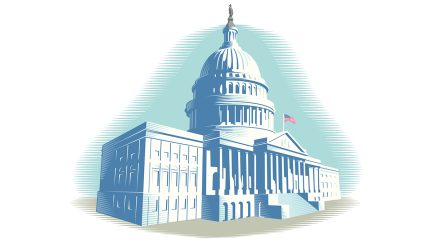For more stories like this, sign up for the PLANADVISERdash daily newsletter.
SECURE 2.0’s Auto Enrollment, Savers Match Will Bring Most Positive Impact
Research from EBRI forecasts the two features will do more for retirement savings than other provisions.
Preliminary research from the Employee Benefit Research Institute says that the SECURE 2.0 Act of 2022 will bring modest benefits for those approaching retirement but will have a larger impact on younger workers. The report also found that the automatic enrollment and saver’s match provisions will have the largest positive effect on retirement security nationally.
The research findings were presented Tuesday by Craig Copeland, EBRI’s director of wealth benefits research, at the 2024 Retirement Symposium hosted by EBRI and the Milken Institute. The full research report is expected by mid-March.
SECURE 2.0 requires all plans started after December 29, 2022 to automatically enroll their participants at a savings rate of between 3% and 10% of pay, unless they opt out or elect a different contribution, starting in 2025.
In 2027, savers with an income below $20,500 or $41,000 for married couples qualify for a 50% match to their individual retirement account or an eligible workplace plan from the federal government up to a maximum match of $1,000. The income thresholds will adjust for inflation beginning in 2027. The match is cut gradually until an individual has income of $35,500 or $71,000 for married couples to prevent a sudden loss of the match. The saver’s match replaces the saver’s credit.
EBRI’s research says these two provisions will likely have the most effect on retirement security for American workers, a key goal of SECURE 2.0. Copeland explains that these provisions are uniquely powerful at bringing more low-income people into the retirement system. The saver’s match “helps the most vulnerable group contribute more savings” by matching their contributions, and this match can be in addition to an employer match.
Copeland adds that low-income workers are “far more likely to participate with automatic enrollment.”
Younger vs. Older
EBRI’s research also shows that SECURE 2.0 will have much greater impact on today’s younger workers. Copeland explains that this is because the benefits of the legislation will need time to compound, and younger workers have time on their side.
In addition, the automatic enrollment provision does not apply to plans that existed at the time SECURE 2.0 was passed, which means this powerful provision does not apply to most plans that currently exist.
Over time, as new plans are launched, and as new firms and even new industries are created, this effect of plans grandfathered without auto features will decline in relative impact, Copeland explains, and many plans that were grandfathered in will voluntarily adopt automatic enrollment. Since this process will take time, it will naturally impact younger workers more.
EBRI finds that that workers between the ages of 35 to 39 who are projected to run out of money during retirement would decline by 4.7 percentage points as a consequence of SECURE 2.0, but workers between 55 and 59 would only see theirs decline by 0.1 percentage points.
Further, the average savings deficit for workers age 35 to 39 would decline by 14.4%, EBRI finds, but only 0.3% for those age 55 to 59.
You Might Also Like:

403(b) Plans Have Special Considerations When Complying with SECURE 2.0

Answering Questions About SECURE 2.0 Catch-Up Provisions





